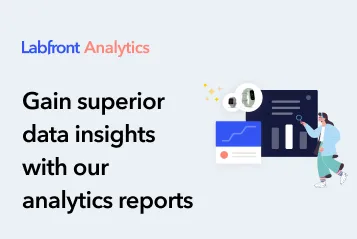We don’t know where they find the time, still Labfront research leads Dr. Han-Ping Huang and Dr. Francis Hsu have published a study on the autonomic balance of heart rhythm complexity after renal artery denervation. It’s not hard to see why these fastidious researchers are the power behind our analytics reports.
Below is a summary of their work:
The autonomic balance of heart rhythm complexity after renal artery denervation: insight from entropy of entropy and average entropy analysis
1. Background
The autonomic imbalance of excessive sympathetic activity and reduced parasympathetic activity represents a significant risk for cardiovascular mortality. Hypertension is a common disease caused by autonomic imbalance. The current method to evaluate the autonomic balance after renal denervation (RDN), an effective and safe treatment to reduce blood pressure (BP) by disrupting renal sympathetic nerves, relies on heart rate variability (HRV). However, parameters of HRV were not always predictive of response to RDN. Therefore, the complexity and disorder of heart rhythm, measured by entropy of entropy (EoE) and average entropy (AE), have been used to analyze autonomic dysfunction. This study evaluated the dynamic changes in autonomic status after RDN via EoE and AE analysis.
2. Methods
Five patients were prospectively enrolled in the Global SYMPLICITY Registry from 2020 to 2021. 24-h Holter and ambulatory blood pressure monitoring (ABPM) was performed at baseline and 3 months after RDN procedures. The autonomic status was analyzed using the entropy-based AE and EoE analysis and the conventional HRV-based low frequency (LF), high frequency (HF), and LF/HF, which reflect both the sympathetic and parasympathetic activities, solely parasympathetic activity, and the autonomic balance, respectively.
3. Results
Table 1 shows the statistical features of their ambulatory BP monitoring (ABPM) data at baseline (before RDN) and 3 months after RDN. At baseline, the means of the 24-h systolic BP (SBP) and diastolic BP (DBP) of the 5 subjects were 144.0 mmHg and 90.2 mmHg. After RDN, the ABPM of all patients showed a significant reduction in BP.

Figure 1 illustrates the average daytime heart rate, AE, EoE, LF/HF, HF, and LF of all 1-h RR interval series before and after RDN of all subjects. The heart rates of all subjects decreased after RDN. Only the AE and HF values of all subjects consistently increased after RDN (p < 0.05). According to previous analysis [1], the post-RDN values of AE and EoE were all within the threshold of being healthy status (1.0 ≤ AE ≤ 1.8 and EoE ≥ 3.8).

4. Conclusions
As shown in Fig. 1, the result suggests that AE might be an effective indicator of evaluating parasympathetic nerve activity as HF. Both AE and HF could be an alternative to interpreting an increasing parasympathetic activity restoring autonomic balance after RDN.
5. Discussion: Insight from AE and EoE
5.1 Previous Finding in [1]
AE and EoE are measures of disorder and complexity for time series. The complexity of the cardiac RR interval series is regarded as a reflection of the degree of the healthiness of heart rhythm, which is relatively high for rhythm intermediate between extreme order and disorder. For example (Fig. 2a), the RR series from CHF patients exhibit relatively stable behavior, while those from AF patients show highly erratic fluctuation. As a result (Fig. 2b), the AE values of AF, healthy, and CHF groups are high, medium, and low, respectively. On the other hand, The EoE value is significantly higher in a healthy group than in CHF and AF groups. The EoE vs. AE plot of the RR series displays an inverted U relation. The corresponding data from CHF, healthy, and AF subjects lie in the lower-left, middle-top, and lower-right regions, respectively.

5.2 Connection to the current study
Both CHF and hypertension are related to an autonomic imbalance with increased sympathetic output and decreased parasympathetic tone. In this study (Fig. 3), the (EoE, AE) data of HTN patients were found to shift from the lower-left region to the middle-top region after RDN, corresponding to the CHF and health regions in the previous study. Therefore, this result suggests that the healthy and pathologic status zones created by the EoE vs. AE plot could be applied to diagnose clinical diseases due to autonomic dysfunction.

Reference
1. C. F. Hsu, P.-Y. Lin, H.-H. Chao, L. Hsu, and S. Chi, "Average Entropy: Measurement of disorder for cardiac RR interval signals," Physica A, vol. 529, p. 121533, 2019
2. P.-L. Lin et al., "The autonomic balance of heart rhythm complexity after renal artery denervation: insight from entropy of entropy and average entropy analysis," Biomedical engineering online, vol. 21, no. 1, pp. 1-12, 2022.

Want HRV analysis in your study? Try our analytics reports!
Gain deeper insights from participants' biomarkers with reports validated by experts (like Francis and Han-Ping).













.svg)


.webp)





.svg)